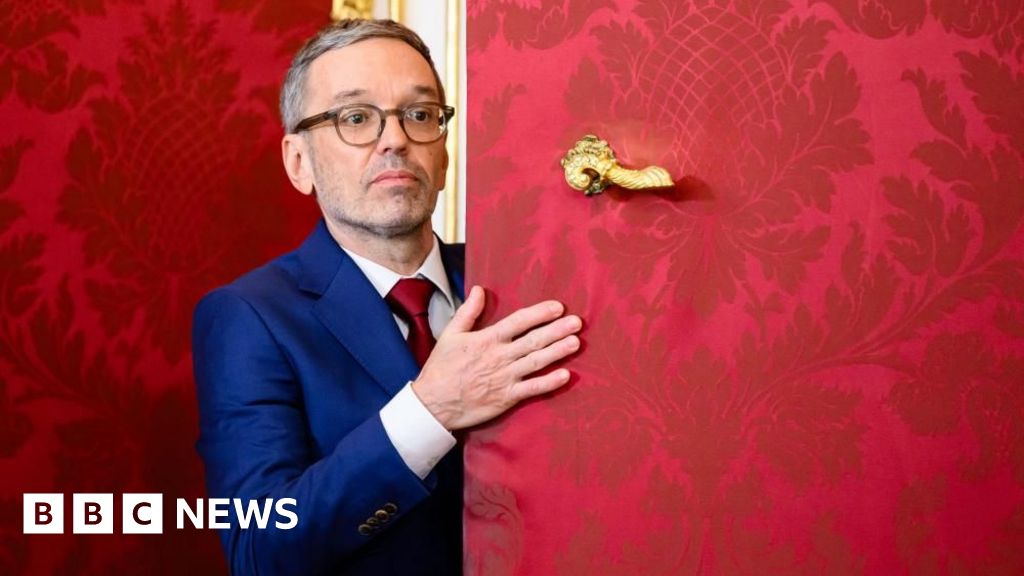
President Donald Trump and Indian Prime Minister Narendra Modi embrace after giving a joint statement in New Delhi, India, Feb. 25, 2020. Manish Swarup/AP hide caption
toggle caption
Manish Swarup/AP
NEW DELHI — Prime Minister Narendra Modi's longstanding bonhomie with President Donald Trump could be tested as the Indian leader kicks off a visit to Washington on Wednesday, eager to avoid tariffs that have been slapped on others and threats of further taxes and imports.
India, a key strategic partner of the United States, has so far been spared any new tariffs, and the two leaders have cultivated a personal relationship. Modi — a nationalist criticized over India's democratic backsliding — has welcomed Trump's return to the White House, seeking to reset India's relationship with the West over his refusal to condemn Russia for its war on Ukraine.
But Trump has repeatedly referred to India as a "tariff king" and pressed the South Asian country on the deportation of migrants. In response, New Delhi has shown a willingness to lower its own tariffs on U.S. products, accept Indian citizens back and buy American oil.
But as tariff threats loom, the question remains how much a good rapport between two leaders matters and how far India will go to cut a deal.
Body language will be closely watched
Modi had established a good working relationship with Trump during his first term in office, and the two can build on the areas of convergence and "minimize areas of friction without conceding on core areas of national interest," says Meera Shankar, India's former ambassador to the U.S.
"Most other partners have their reciprocal lists ready from the word go, because it's a point of leverage when you negotiate," Shankar added, expressing hope that India "will find the right balance between firmness and flexibility" on the tariffs issue.
Modi — boosted by his ruling Hindu nationalist party's victory in the high-stakes state legislature election last weekend in India's federal territory, including New Delhi — said before leaving for Washington that the visit was an "opportunity to build upon" collaboration during Trump's first term and "deepen our partnership" in areas such as technology, trade, defense and energy.
What has Trump said?
Speaking with Modi in January, Trump emphasized the importance of India buying more American-made military gear and weapons, as well as reducing the trade imbalance. Last year, the U.S. imported $50 billion more in goods than it sold to India.
A readout from the White House at the time said Trump "emphasized the importance of India increasing its procurement of American-made security equipment and moving toward a fair bilateral trading relationship."
Earlier this month, India accepted the return of 104 migrants brought back on a U.S. military plane, the first such flight to the country as part of a crackdown ordered by the Trump administration.
Also, Modi's government lowered some high tariffs, including on some Harley-Davidson motorcycles, from 50% to 40%. In 2023, India had dropped retaliatory tariffs on U.S. almonds, apples, chickpeas, lentils, and walnuts.
"Another thing we can expect is that Modi would offer to purchase more American (natural) gas to narrow the U.S. trade deficit," said Lisa Curtis, director of the Indo-Pacific security program at the Center for a New American Security, a Washington-based think tank. "This will help a little bit."
Concerns over China
India is seen as integral to the U.S. strategy of containing China in the Indo-Pacific and is to host a summit of a group of countries known as the Quad — made up of the U.S., India, Japan and Australia — later this year.
But India will likely have to recalibrate its stand in case of a Washington-Beijing thaw under Trump.
"Trump's outreach to China will complicate India's ability to cultivate the American desire to use India as a proxy against China without actually ever becoming one," said Happymon Jacob, founder of the New Delhi-based Council for Strategic and Defense Research.
India turned the page with China and in December agreed to work toward a solution to their long-running border dispute in the Himalayas after a military standoff that began with a deadly clash in 2020.
"Even a tactical accommodation between the U.S. and China has implications for India," Shankar said.
Defense deals on the agenda?
The U.S. is India's largest trade partner, with a trade deficit of $50 billion in India's favor. The Indo-U.S. goods and services trade totaled around $190.1 billion in 2023. According to India's External Affairs Ministry, the U.S. exports to India were worth nearly $70 billion and imports $120 billion.
India depends on Russia for nearly 60% of its defense equipment, but the war in Ukraine has added to doubts about future supplies, and New Delhi has been looking more toward the U.S., Israel, Britain, and others.
A recently struck deal will allow U.S.-based General Electric to partner with India-based Hindustan Aeronautics to produce jet engines for Indian aircraft in India and the sale of U.S.-made armed MQ-9B SeaGuardian drones.
Since 2008, India has contracted over $20 billion worth of U.S.-origin defense equipment.
"For India, that could also be an area where we see some synergies with the U.S.," Shankar said, adding that Trump will likely seek to persuade India to buy more defense equipment.
Raja Mohan, an analyst at the Institute of South Asian Studies in Singapore, said Modi's visit will be a good time to advance Indo-U.S. ties.
"India's diplomatic skills will be tested, so the general goodwill that exists between Trump and Modi should be translated into concrete outcomes," Mohan said.

 3 hours ago
3
3 hours ago
3









